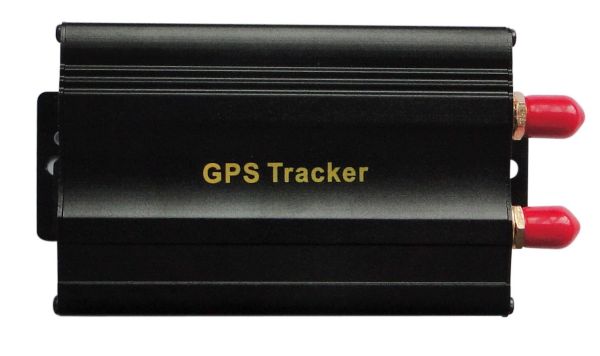
What’s happening right now?
The Global Positioning System or GPS was first used by the US Military to track the movement of its vehicles and convoys in 1973 using an array of 26 satellites continuously orbiting the earth at low heights. This was opened up for civilian use in the early 1990s. Many other satellite based positioning systems have now become available and low cost GPS tracking devices and software applications for their use have been developed. The most common application is of course as a positioning device, in relation to a map. Satellite tracking can locate a vehicle within a 2 meter circle almost anywhere on earth. Once this locating is done, the map application plots the route to the destination that the driver wants to reach. Data bases have been developed and expanded to include not just towns but also restaurants, shopping malls even rest areas and bank ATMs. These are being constantly expanded to cover every possible kind of information a driver may seek.
The GPS tracking device has now been adapted to serve another important function, that of improving fuel efficiency especially by large fleet owners.
GPS tracking devices have been fitted to delivery trucks, buses, taxis and other such vehicles that continuously send information back to a base station. The information is sent typically every 2 – 3 minutes and is tailored to monitor the fleet and to improve service. For example, GPS information on a delivery truck can monitor its travel from the pick-up point and can provide information on the distance covered, the stops made, any attempt by the driver to deviate from his prescribed route and even the speeds at which he has driven. For delivery trucks carrying refrigerated materials, the tracker can also be programmed to read and send the container temperature. For transport of hazardous materials, the pressure and temperature in the container can be monitored as well as any leaks from valves. If any problems are detected in this remote monitoring, the central dispatcher can contact the driver and initiate preventive measures.
The GPS tracking device is now being applied to another important need, that of improving fuel efficiency. Fuel costs already are the largest single element of cost in a fleet operator’s revenues and with fuel costs rising all the time, measures to track and control these are worthwhile. It is well known that fuel economy is impacted by driving habits. For example, driving at a constant speed is more fuel efficient than frequent acceleration and braking. The gear ratio selected for driving should be appropriate for the speed. Over speeding at low gear ratios or low speeds at high gear ratios use up more fuel. Idling the engine at traffic stops is another fuel wasting activity. Many modern vehicles are being fitted with auto switch-off of engine, when idling. Higher rolling resistance, that happens when the tires are under-inflated, also use more fuel. Tire pressure monitors are now fitted to vehicles to check tire-pressure. In addition, most modern vehicles are fitted with electronic engine controllers that monitor vehicle performance and initiate alarms. These signals serve as warning to the driver to get the vehicle attended to.
With the modern vehicle trackers that can be fitted to each vehicle, all of this data can be uploaded through the GPS system and at the base station some skilled people can monitor this data and advice the driver on what he needs to do. Some of these trackers are being provided with ingenious new applications.
Trends
1. Vehicle tracking system with fuel consumption
![]()
This compact tracker, made by a Chinese electronics company, measures only 20 X 82 X 28 mm and has provision for attachment of an 8 channel CCD camera that can upload real time pictures of the vehicle and its position to the base station. It can accept signals from the nature of material transported. For example it will receive temperature readings from a refrigerated container or the bar code information from packages for uploading to the base station. The latter feature is useful for trucks that need to make multiple deliveries and want to ensure that the right packages are unloaded at each delivery point.
The device is provided with a memory buffer to store information if the tracker is out of GPS range, for example, in a tunnel or a road underpass.
2. KEYTROLLER Color LCD vehicle monitoring system

The Keytroller device serves many functions beyond vehicle tracking. The driver has to flash a valid RFID card for the vehicle to start. This is an anti-theft feature built into the vehicle tracker. Starting and stopping the vehicle is from the key pad, avoiding keys that get misplaced. On starting the engine, the driver is required to go through a check list of procedures before engaging gear to start driving. If he does not complete the checklist as laid down, an alarm sounds and if that too is ignored, the engine is locked out and needs supervisor intervention to restart.
The Keytroller is also programmed to monitor engine performance parameters like oil temperature and pressure. It even monitors if the seat belt is fastened. The Keytroller also monitors for any impact on the vehicle. If the impact is above a set threshold, the engine is shut down and report sent to the base station.
The LCD screen serves as a two way text messaging device between the driver and his base station.
3. Vehicle Monitoring System – GPS 103

This is another Chinese made GPS tracker with the added feature that they term a geo-fence. A vehicle can be programmed for operation within a geographical boundary such as city limits or state borders. If the vehicle attempts to cross the set geo-fence, the GPS tracker will raise an alarm both to the driver and to the base station. This is done by using the map feature of the GPS to set the fence limits. This tracker too, is a small device of 83 X 54 X 26 mm, and can be mounted in a hidden spot in the vehicle where it would be difficult to damage or disconnect.
The concept
Real time performance monitoring of moving vehicles is now possible with these low cost tracking devices and using the GPS system. The constant feed of operations and performance data to the home station would drive the development of expert systems that can, in real-time, instruct the driver on driving habits or safety or alternative routing in case of weather disruptions, besides fuel efficiency.
The advantages
These trackers, by their very presence in vehicles would promote better driving, especially for safety, and that factor alone would justify the deployment of these devices. In the future, trackers like these could be programmed not just to talk to their base stations but also to other vehicles fitted with such devices. For example, the tracker in one vehicle could warn vehicles behind of slippery road conditions.
The impact
Vehicle trackers fitted to vehicles would permit the vehicle to be monitored from remote both for vehicle performance and safety. These could also get expanded to a much broader scope to assist the driver when he appears unable to control the vehicle or respond to unexpected driving situations.




